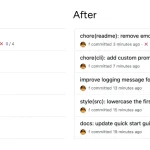HOPX
The HOPX MCP Server enables your AI assistants to execute code in isolated cloud containers through the Model Context Protocol.
It acts as a safe “playground” for your AI that spins up in milliseconds, runs the requested task (data analysis, file manipulation, or bash commands), and destroys itself immediately after.
Features
- 🐍 Multi-language support (Python, JavaScript, Bash, Go)
- 🔒 Isolated cloud containers with auto-cleanup
- 📊 Data science libraries pre-installed (pandas, numpy, matplotlib)
- ⚡ Fast container startup (~200ms)
- 🔄 Persistent sandbox environments
- 🌐 Internet access enabled
- 📁 Full file system operations
- ⏱️ Background and async task support
Use Cases
- Data analysis workflows where you need to process CSV files or API data without local Python setup.
- Rapid prototyping of scripts and algorithms through AI assistants.
- Educational scenarios where students can run code safely without local installations.
- Automated testing of code snippets across different languages.
- Processing sensitive data in isolated environments rather than locally.
How to Use It
1. Go to hopx.ai and generate your HOPX_API_KEY from the dashboard.
2. Install the MCP server via uvx.
uvx hopx-mcp3. Add the server definition to your specific tool’s configuration file. Replace your-api-key-here with the actual key you generated.
For Claude Desktop
{
"mcpServers": {
"hopx-sandbox": {
"command": "uvx",
"args": ["hopx-mcp"],
"env": {
"HOPX_API_KEY": "your-api-key-here"
}
}
}
}For Cursor
{
"mcpServers": {
"hopx-sandbox": {
"command": "uvx",
"args": ["hopx-mcp"],
"env": {
"HOPX_API_KEY": "your-api-key-here"
}
}
}
}4. Once connected, the LLM will have access to a suite of tools. You can prompt the model naturally (e.g., “Run this python script to calculate Fibonacci”), but understanding the underlying tools helps you debug.
One-Shot Execution (Best for simple scripts)
The execute_code_isolated tool spins up a container, runs the code, and kills the container immediately. It’s the most cost-effective method for quick questions.
- Parameters:
code,language(Python, JavaScript, Bash, Go),timeout. - Example Output:
{
"stdout": "Hello, World!\n",
"exit_code": 0,
"execution_time": 0.123
}Persistent Sandboxes (Best for complex tasks)
If your agent needs to write a file in step 1 and read it in step 2, it needs a persistent session. The agent will use these tools in sequence:
create_sandbox(template_id='code-interpreter'): Establishes the environment.execute_code(sandbox_id, code='...'): Runs code in that specific environment.file_write(sandbox_id, path, content): Saves data to the container.delete_sandbox(sandbox_id): Cleans up resources.
File System Operations
The agent can manipulate the container’s file system using:
file_read/file_writefile_list/file_existsfile_mkdir/file_remove
FAQs
Q: Is the code running on my local machine?
A: No. All code executes in HOPX’s cloud infrastructure. Your local machine only acts as the client sending the request.
Q: Can the sandboxes access the internet?
A: Yes, internet access is enabled by default. This allows the code to pip install libraries, curl websites, or interact with public APIs.
Q: What happens if the AI forgets to delete a sandbox?
A: There is an auto-cleanup mechanism. By default, sandboxes self-destruct after 600 seconds (10 minutes) of inactivity or after the configured timeout is reached, preventing resource leaks.
Q: Can I use custom Docker images?
A: Currently, you select from available templates (like code-interpreter). You can use list_templates to see what environment configurations are available.
Q: Is my data safe inside the container?
A: The containers are isolated from each other and protected by JWT authentication. However, since the code runs in a cloud environment, you should adhere to your organization’s policy regarding uploading highly sensitive PII or credentials to third-party execution environments.
Latest MCP Servers
HOPX
Code Execution Mode
WPMCP
Featured MCP Servers
Monday.com
MongoDB
CSS
FAQs
Q: What exactly is the Model Context Protocol (MCP)?
A: MCP is an open standard, like a common language, that lets AI applications (clients) and external data sources or tools (servers) talk to each other. It helps AI models get the context (data, instructions, tools) they need from outside systems to give more accurate and relevant responses. Think of it as a universal adapter for AI connections.
Q: How is MCP different from OpenAI's function calling or plugins?
A: While OpenAI's tools allow models to use specific external functions, MCP is a broader, open standard. It covers not just tool use, but also providing structured data (Resources) and instruction templates (Prompts) as context. Being an open standard means it's not tied to one company's models or platform. OpenAI has even started adopting MCP in its Agents SDK.
Q: Can I use MCP with frameworks like LangChain?
A: Yes, MCP is designed to complement frameworks like LangChain or LlamaIndex. Instead of relying solely on custom connectors within these frameworks, you can use MCP as a standardized bridge to connect to various tools and data sources. There's potential for interoperability, like converting MCP tools into LangChain tools.
Q: Why was MCP created? What problem does it solve?
A: It was created because large language models often lack real-time information and connecting them to external data/tools required custom, complex integrations for each pair. MCP solves this by providing a standard way to connect, reducing development time, complexity, and cost, and enabling better interoperability between different AI models and tools.
Q: Is MCP secure? What are the main risks?
A: Security is a major consideration. While MCP includes principles like user consent and control, risks exist. These include potential server compromises leading to token theft, indirect prompt injection attacks, excessive permissions, context data leakage, session hijacking, and vulnerabilities in server implementations. Implementing robust security measures like OAuth 2.1, TLS, strict permissions, and monitoring is crucial.
Q: Who is behind MCP?
A: MCP was initially developed and open-sourced by Anthropic. However, it's an open standard with active contributions from the community, including companies like Microsoft and VMware Tanzu who maintain official SDKs.



